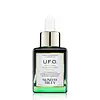What's inside
What's inside
 Key Ingredients
Key Ingredients

 Benefits
Benefits

 Concerns
Concerns

 Ingredients Side-by-side
Ingredients Side-by-side

Nigella Sativa Seed Oil
EmollientRosa Canina Fruit Oil
EmollientCalophyllum Inophyllum Seed Oil
AntimicrobialHelianthus Annuus Seed Oil
EmollientSymphytum Officinale Root Extract
Skin ConditioningNigella Sativa Seed Oil, Rosa Canina Fruit Oil, Calophyllum Inophyllum Seed Oil, Helianthus Annuus Seed Oil, Symphytum Officinale Root Extract, Olea Europaea Leaf Extract, Lavandula Angustifolia Oil, Simmondsia Chinensis Seed Oil, Melaleuca Alternifolia Leaf Oil, Helichrysum Italicum Flower Oil, Matricaria Recutita Flower Oil, Rosmarinus Officinalis Leaf Extract
Silybum Marianum Seed Oil
Skin ConditioningNigella Sativa Seed Oil
EmollientCucumis Sativus Seed Oil
EmollientPunica Granatum Seed Oil
EmollientDiisopropyl Sebacate
EmollientVaccinium Macrocarpon Seed Oil
Skin ConditioningDimethyl Isosorbide
SolventLinum Usitatissimum Seed Oil
PerfumingCaprylic/Capric Triglyceride
MaskingGlycyrrhiza Glabra Root Extract
BleachingPrunus Armeniaca Kernel Oil
MaskingHexylresorcinol
AntimicrobialEthyl Linoleate
EmollientMelia Azadirachta Leaf Extract
Skin ConditioningChamomilla Recutita Flower Oil
MaskingCitrus Aurantium Amara Flower Oil
MaskingMelia Azadirachta Flower Extract
Skin ConditioningHelianthus Annuus Seed Oil
Emollient4-Terpineol
MaskingSimmondsia Chinensis Seed Oil
EmollientCoccinia Indica Fruit Extract
Skin ConditioningSolanum Melongena Fruit Extract
Skin ConditioningAmber Powder
Curcuma Longa Root Extract
MaskingCurcuma Longa Leaf Extract
Skin ConditioningOcimum Sanctum Leaf Extract
Skin ConditioningAloe Barbadensis Flower Extract
EmollientCorallina Officinalis Extract
Skin ConditioningRosmarinus Officinalis Leaf Extract
AntimicrobialMoringa Oleifera Seed Oil
EmollientTocopherol
AntioxidantCitrus Paradisi Peel Oil
MaskingOcimum Basilicum Flower/Leaf Extract
TonicSilybum Marianum Seed Oil, Nigella Sativa Seed Oil, Cucumis Sativus Seed Oil, Punica Granatum Seed Oil, Diisopropyl Sebacate, Vaccinium Macrocarpon Seed Oil, Dimethyl Isosorbide, Linum Usitatissimum Seed Oil, Caprylic/Capric Triglyceride, Glycyrrhiza Glabra Root Extract, Prunus Armeniaca Kernel Oil, Hexylresorcinol, Ethyl Linoleate, Melia Azadirachta Leaf Extract, Chamomilla Recutita Flower Oil, Citrus Aurantium Amara Flower Oil, Melia Azadirachta Flower Extract, Helianthus Annuus Seed Oil, 4-Terpineol, Simmondsia Chinensis Seed Oil, Coccinia Indica Fruit Extract, Solanum Melongena Fruit Extract, Amber Powder, Curcuma Longa Root Extract, Curcuma Longa Leaf Extract, Ocimum Sanctum Leaf Extract, Aloe Barbadensis Flower Extract, Corallina Officinalis Extract, Rosmarinus Officinalis Leaf Extract, Moringa Oleifera Seed Oil, Tocopherol, Citrus Paradisi Peel Oil, Ocimum Basilicum Flower/Leaf Extract
 Reviews
Reviews

Ingredients Explained
These ingredients are found in both products.
Ingredients higher up in an ingredient list are typically present in a larger amount.
Helianthus Annuus Seed Oil is the oil derived from the seeds of a Sunflower. Sunflower seed oil is non-fragrant. It is an emollient, meaning it helps to soften the skin.
Sunflower seed oil contains many fatty acids. The fatty acids found in sunflower seeds include (from highest amount to least): linoleic acid, myristic acid, palmitic acid, stearic acid, arachidic acid, oleic acid, and linolenic acid.
These fatty acids help the skin create ceramides. Ceramides play a role in repairing the skin barrier.
Helianthus Annuus Seed Oil helps moisturize the skin. This in turn helps the skin look more rejuvenated and smoother.
Sunflowers are rich in vitamin E.
Historians believe Indigenous cultures of North America domesticated sunflowers before corn. Thus they relied on sunflower oil for a variety of uses. One such use is moisturizing skin and hair.
Sunflower seed oil may not be fungal acne safe. We recommend speaking with a professional if you have any concerns.
Learn more about Helianthus Annuus Seed OilThis ingredient is also known as black seed oil or black cumin. It has emollient, skin conditioning, and perfuming properties.
It is rich in linoleic and oleic acids, making it a great skin hydrator or emollient. Other compounds found in black seed oil include thymoquinone, sterols, and various terpenes; these compounds give it antioxidant, anti-inflammatory, and antimicrobial properties.
Studies show thymoquinone helps reduce oxidative stress and dampens the inflammatory pathways. Combining this with the oils makes this ingredient great for barrier repair and moisturization.
Other studies have found this ingredient to have antimicrobial activity against several acne-causing bacteria.
Learn more about Nigella Sativa Seed OilRosmarinus Officinalis Leaf Extract comes from rosemary. Rosemary is native to the Mediterranean.
While Rosmarinus Officinalis Leaf Oil can be volatile due to its fragrant properties, the fragrance components are usually removed in the leaf extract.
Rosemary Leaf Extract contains many antioxidants such as rosmarinic acid and caffeic acid. Rosemarinic acid, a compound found in rosemary leaf, has been found to help soothe skin conditions such as eczema and acne.
Learn more about Rosmarinus Officinalis Leaf ExtractThis oil comes from the seeds of the desert shrub called Jojoba. It is more commonly known as jojoba oil, a non-comedogenic oil.
Jojoba oil does not contain fragrance and has many fatty-acids, making it a great soothing ingredient.
It also contains Vitamin E, a great moisturizing ingredient. Vitamin E is also an antioxidant and protects your skin against oxidative damage.
This ingredient humectant properties, meaning it helps draw moisture from the air. This helps keep your skin hydrated.
While jojoba has antibacterial properties, it is only able to kill some strains of bacteria.
Studies also show it helps in wound healing. In fact, Indigenous cultures have used jojoba as a moisturizer and to help treat burns for centuries.
Fun fact: Jojoba oil similar to natural human skin sebum, so it has a great effect on dry skin. It is also promising with helping to regulate sebum production.
Due to its fatty acid content, Jojoba oil may not be fungal acne safe. We recommend speaking with a professional if you have any concerns.
Learn more about Simmondsia Chinensis Seed Oil